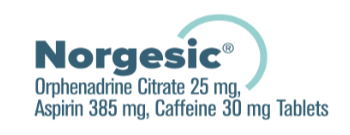Oral Thrush Recovery: How Long Should Treatment Last?

Logan Anderson, Pharm.D.
Galt Pharmaceuticals Medical Affairs Fellow
What is oral thrush?
Oral thrush, also known as oropharyngeal candidiasis, is the colonization of the mouth by a group of fungi known as Candida.
Patients may notice thick white patches on the walls of the mouth, gums, and tongue. If these patches are scraped off, red and inflamed tissue is revealed.
Eating may be difficult due to the painful or burning discomfort of these plaques. Additionally, oral thrush is often accompanied by foul taste or loss of the ability to taste.
How do you get oral thrush?
Candida is a relatively common organism, with small traces having been found in the mouths of 18-60% of healthy people.1 In these amounts, the Candida is largely harmless because the body’s immune system along with competing bacteria of the mouth keep the Candida in check.
However, when these defenses are breached – such as in the case of patients with HIV or those receiving immunosuppressants or broad-spectrum antibiotics – the fungi seize the opportunity to colonize.
How do you treat oral thrush?
Thankfully, clinicians are well equipped to treat oral thrush. The Infectious Disease Society of America recommends the following:
- For mild to moderate infections, local treatment with clotrimazole troches (a dissolvable lozenge) or miconazole buccal tablets (a dissolvable tablet placed along the gums).
- Alternatively, nystatin suspension or nystatin pastilles may be used.
- For moderate to severe disease, a systemic anti-fungal, fluconazole, is recommended.2
Why is it important to take the full course of therapy?
These antifungal products must be used for the complete duration of therapy, typically 7-14 days, to ensure complete eradication of the infection. It is common for Candida to recolonize the mouth if treatment is interrupted or taken improperly.
Because treatments for oral thrush come in a variety of dosage forms, patients can be confused by the proper administration of their treatment, or they may not know what to do when they forget to take their medication. Some treatments require multiple doses to be taken throughout the day and can add to the patient’s ‘pill burden’ if they are taking other scheduled medications – making them more likely to forget a dose.
If symptoms of oral thrush persist or worsen throughout the complete duration of therapy, it is important to contact a healthcare provider to assess for possible treatment-resistant infections or underlying conditions.
Key takeaway:
Oral thrush is treatable, but completion of the full course of therapy and adherence to administration instructions is essential to prevent recurrence of the disease.
References
- Darwazeh, Azmi M. G., Darwazeh, Tamer A., What Makes Oral Candidiasis Recurrent Infection? A Clinical View, Journal of Mycology, 2014, 758394, 5 pages, 2014. https://doi.org/10.1155/2014/758394
- Peter G. Pappas, Carol A. Kauffman, David R. Andes, Cornelius J. Clancy, Kieren A. Marr, Luis Ostrosky-Zeichner, Annette C. Reboli, Mindy G. Schuster, Jose A. Vazquez, Thomas J. Walsh, Theoklis E. Zaoutis, Jack D. Sobel, Clinical Practice Guideline for the Management of Candidiasis: 2016 Update by the Infectious Diseases Society of America, Clinical Infectious Diseases, Volume 62, Issue 4, 15 February 2016, Pages e1–e50, https://doi.org/10.1093/cid/civ933
The information provided is for general informational and educational purposes only. It is not intended to serve as medical advice, diagnosis, or treatment. The content is written by a licensed pharmacist and reflects general knowledge and expertise in the healthcare field, but it is not a substitute for professional medical advice from a qualified healthcare provider.
Always consult your physician, pharmacist, or other qualified healthcare professional before starting, stopping, or modifying any medication, treatment, or health regimen. Individual health conditions and needs vary, and only a healthcare professional can provide personalized advice tailored to your specific situation.
While we strive to ensure the accuracy and currency of the information presented, medical knowledge is constantly evolving, and errors or omissions may occur. The blog’s content does not cover all possible uses, precautions, side effects, or interactions of medications or treatments. Reliance on any information provided is solely at your own risk.
Links to external websites or resources are provided for convenience and do not imply endorsement or responsibility for their content.






